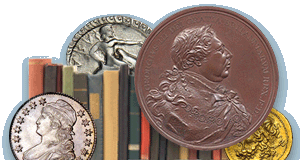
PREV ARTICLE
NEXT ARTICLE
FULL ISSUE
PREV FULL ISSUE
WAMPUM BEADS UNEARTHED IN NEWFOUNDLANDArchaeologists working in Newfoundland have made the first discovery of wampum beads in that area of Canada. -Editor Seven tiny beads unearthed in Newfoundland, Canada, are a rare discovery — they may be the only wampum ever found in the province, and they hint at trade between Indigenous people and European colonists. The beads were found in July at the Colony of Avalon site in Ferryland, which was an early European settlement and a trading post for Indigenous people in the 17th century. The tubular beads are white and purple, and they were crafted from the shells of whelk (carnivorous sea snails) and quahog (hard-shelled clams). They were unearthed by archaeology student Calum Brydon, who told CBC News that at first he didn't know what he had discovered. Minutes later, however, archaeologists in charge of the excavation recognized the beads as wampum. "All the wampum beads were found in a 17th century midden [garbage] layer deposited inside a storage room associated with Ferryland's principal dwelling or Mansion House," archaeologist Barry Gaulton, a professor at Memorial University in St. John's, Newfoundland and Labrador, told Live Science. Indigenous people often used wampum as currency with colonial settlers, but these beads may be the first wampum ever found in Canada's vast easternmost province. "No wampum beads have been found at the Colony of Avalon in [more than] 30 years of ongoing archaeological investigation," Gaulton said in an email. "To the best of our knowledge, no wampum beads have ever been found in the province of Newfoundland and Labrador." "Wampum" is an English settler term derived from the Algonquin word "wampumpeag," meaning "string of white shell beads." Many Indigenous people, especially in the eastern parts of pre- and post-Colonial North America, originally used wampum beads for ceremonial purposes: elaborate belts and necklaces made from wampum beads, for example, were used to record important events, such as treaties and declarations of war. The style of the beads and their drilling method indicates they were made in about 1600. The beads "likely arrived at Ferryland in the 1640s or 1650s," Gaulton said. "Their discovery in a domestic midden dating from the mid- to late-17th century suggests that they were discarded or lost during this period."
To read the complete article, see:
Wayne Homren, Editor The Numismatic Bibliomania Society is a non-profit organization promoting numismatic literature. See our web site at coinbooks.org. To submit items for publication in The E-Sylum, write to the Editor at this address: whomren@gmail.com To subscribe go to: Subscribe All Rights Reserved. NBS Home Page Contact the NBS webmaster 
|
